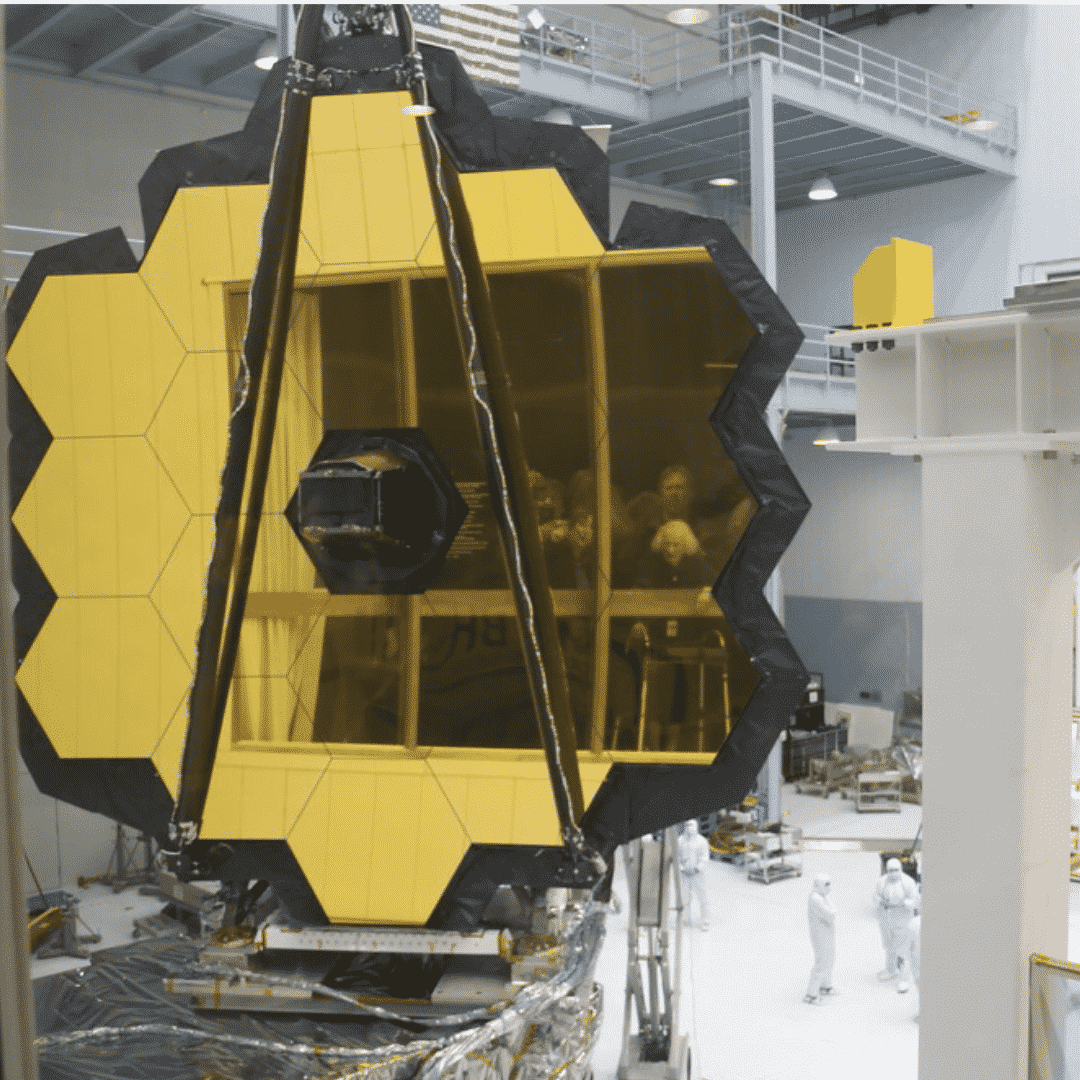First things first, you might be thinking, “What kind of title is that?!”
Last week, I asked my friends, “What are your personal finance interests?” One responded, “The future of space technology.” I knew that I had two follow-up options. The first was to squint, tilt my head, and slowly massage my temples. Does…that…answer…?
The second option, though, was to get creative and think of a harebrained way to combine personal finance and satellites. And as the lone author on this blog who moonlights as a aerospace engineer, I figured I could do that. But let’s be honest, I did the squint/tilt/massage thing, too.
The James Webb Space Telescope (JWST)
JWST is the biggest, baddest NASA telescope ever. When JWST starts taking pictures, it will open a new era of astronomy and physics. Similar breakthroughs of the past have led to achievements like:
- Learning that the Earth isn’t the center of the universe. (It’s not flat either, fyi)
- Confirming theories about black holes and gravitational waves
- People seeing something that looked like a face on the surface of Mars, and thinking, “Dude. A face.”

JWST is going to do things like that, but way bigger, better, and with even more instances of space-things looking like faces. Or animals. People love animals.

What makes JWST cool?
It’s got a deployable sun shield and folds up like origami to fit in a rocket. Cool new tech.
It’s got a segmented primary mirror, coated with gold. Sweet.
It’s got an infrared imaging sensor that operates at a brisk 50 Kelvin, colder than liquid nitrogen.

Let’s shift towards finance…
The problem, though, is that JWST has been making the news for all the wrong reasons. It was originally supposed to launch in 2007 for a total cost of $0.5 billion. After some delays, the estimate changed to 2010 and $2.5 billion. And then 2014 and $4.5 billion, then 2016 and $6.5 billion. So, when did it actually launch?
It’s still on the ground.
Right now, NASA is targeting a 2021 launch, and the total budget has ballooned to $9.66 billion dollars. 14 years delayed, and a taxpayer-footed budgetary increase of 1900%.
NASA can do it, but you can’t
I’m biased towards thinking that space is cool, that JWST is cool, and that all this delay will be worth it. One of my mentors loved to point out, “You only get one shot to get these things right. Once it’s out there [in space], it’s not coming back.” So I understand why NASA is taking its time and spending a lot of money.
But letting a budget balloon by 1900% is not an acceptable lesson for us to apply to our lives.
While there are many reasons why the JWST budget has gone crazy, one of the most significant is that the original project plan involved assumptions about future inventions and innovations. The scientists said, “We’ll invent this new material, and we’ll write this new software algorithm, and we’ll invent this new cryocooler…and then our idea will work.” It sounds great! But when those inventions failed to materialize within the planned schedule and budget, then the project swelled up.
We can’t make those kinds of assumptions in our lives. I can’t say, “I’m going to buy this enormous house, because the business that I haven’t started yet will be successful, and I’ll use my future millions to pay down the mortgage.” What if the business isn’t successful?
Or maybe you’ve thought, “I’m going to buy this new Tesla. I can’t really afford it now, but I’m getting promoted in three years, and then it’ll be chicken feed.” A lot can change in three years…just ask NASA. What happens if you don’t get that promotion?
You catching my drift? Digging yourself a hole and justifying it with an assumption about the future is very risky. When you spend too much money, you can’t crawl to Congress and ask for more. Instead, you need to face the brutal facts of your reality and understand why you overspent. You need to take immediate action, find the source of the leaking money, and come up with a plan to get back on track under the original terms (i.e. your original budget).
Did you capitulate to an overeager “Buy that!” voice in your head?
Are you tracking your dollars?
Is that a safe debt to take on?
In summary…
Ok, ok, this post was half science and half finance. But the science is cool! And how about those pictures?
Let’s all hope that JWST starts taking breathtaking images in the near future. But don’t forget the hard lesson that it teaches us: a budget based on assumptions is bound to crash and burn.
Thanks for reading the Best Interest blog! -Jesse